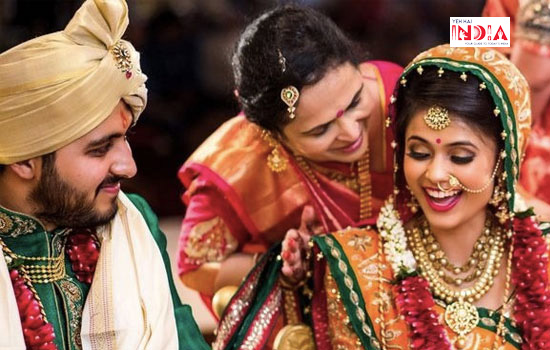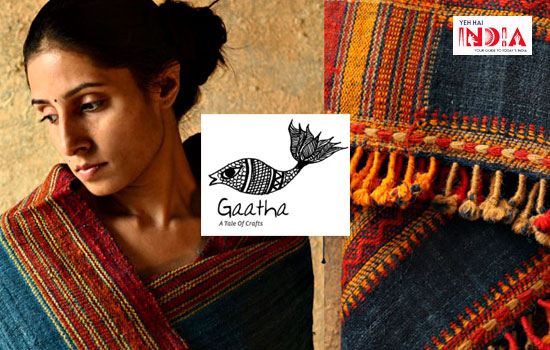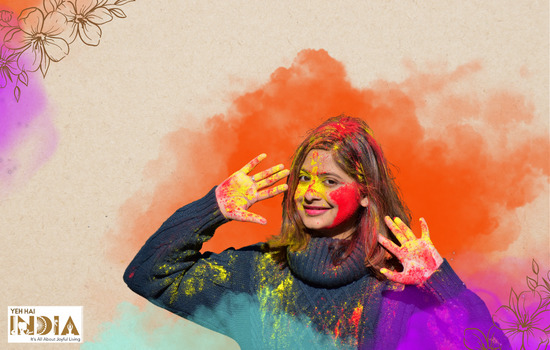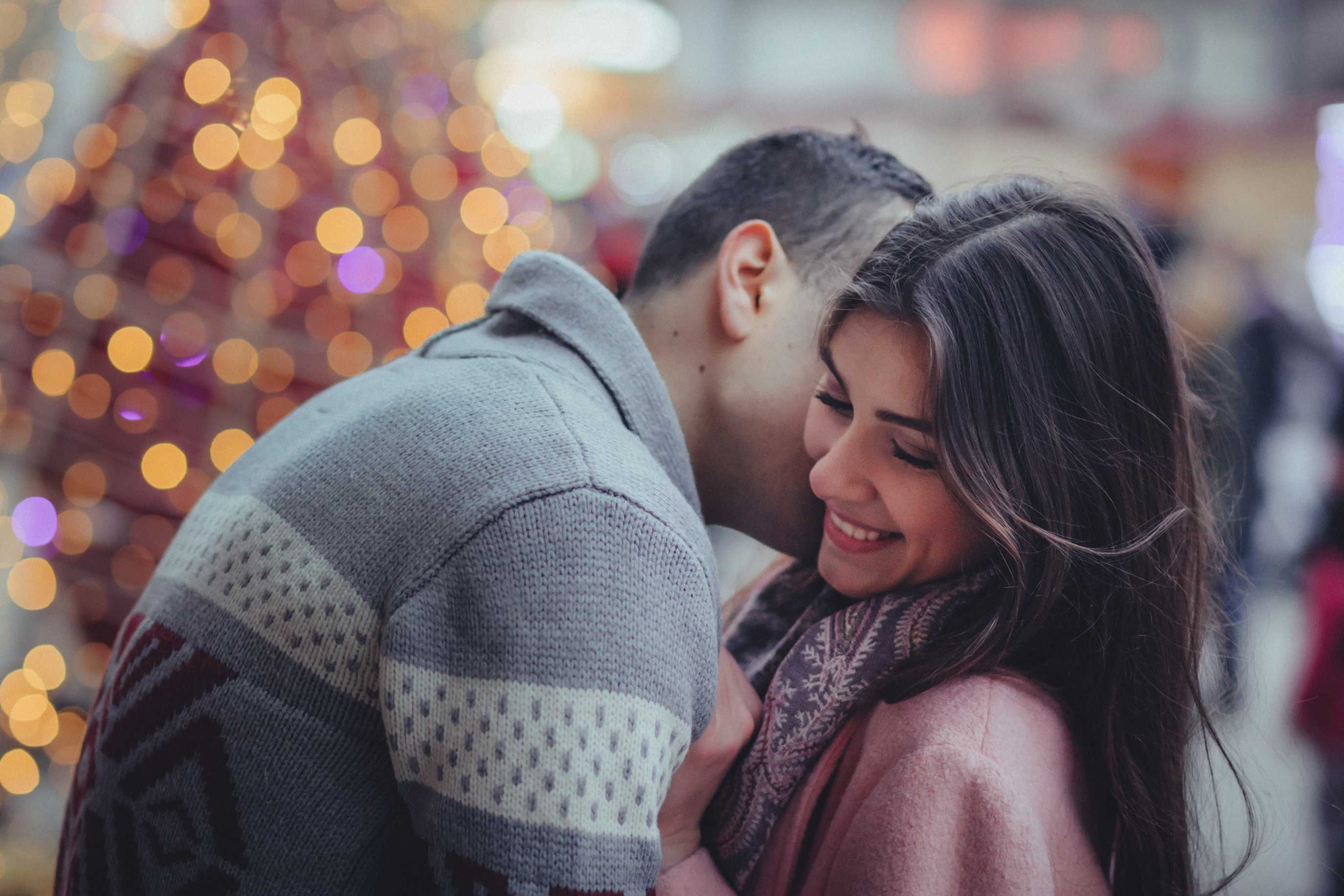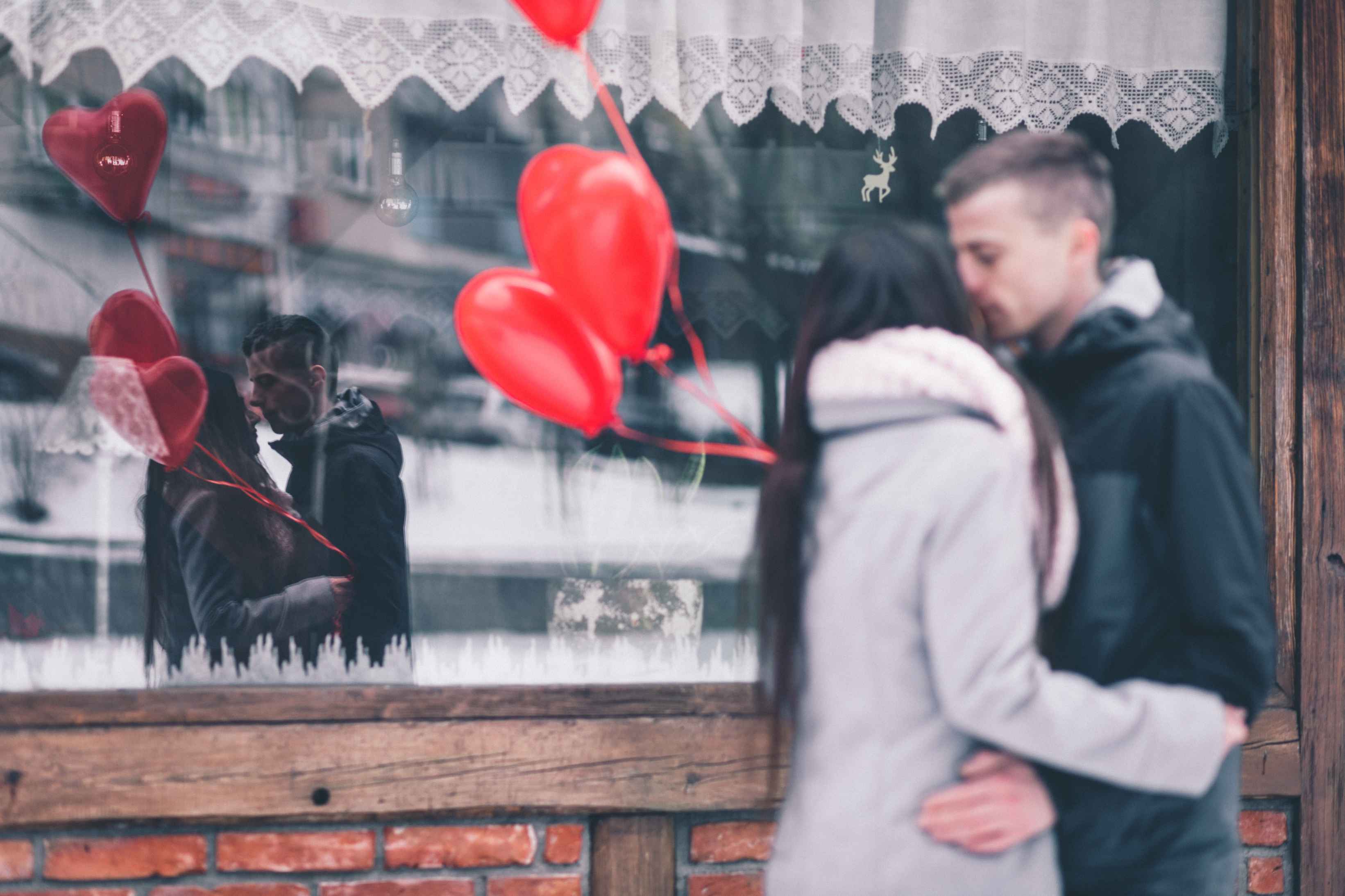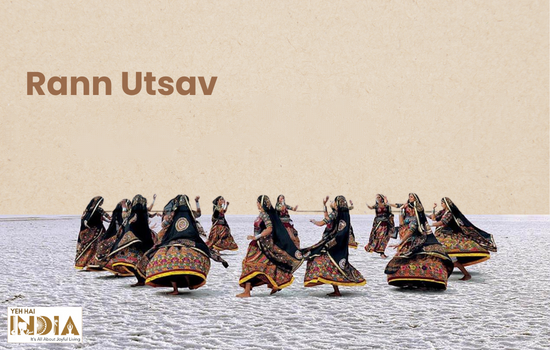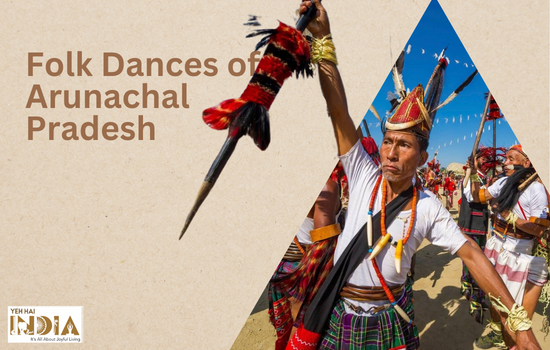You know it’s a Gujarati Wedding when you see the vibrant colours and feel those blissful vibes around. This auspicious occasion has to be a special one and Gujarati’s leave no stone unturned to make this happen.
Let’s take a sneak peek at all the wedding ceremonies and rituals that make this wedding an affair to remember.
We have a ready reckoner if you are planning on a Gujarati wedding. Get to know all about pre-wedding, wedding and post-wedding customs which make a Gujarati wedding different and exceptional.
The Pre-Wedding Ceremonies
1. Chandlo Maatli- The first step
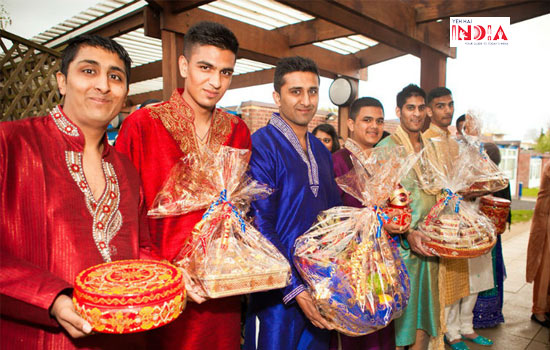
Once the marriage is fixed, this is the first celebration. Chandlo refers to the vermillion ‘Tilak’ and Maatli refers to the container of sweets.
The ritual of “Chandlo Maatli” is a sign of acceptance where the bride’s father along with four other male members visit the groom’s place.
During this ceremony, the bride’s father applies teeka (vermillion) on the groom’s forehead and gifts him maatli(sweets). The wedding date is also decided during this ceremony.
2. Gol Dhana- The engagement ceremony
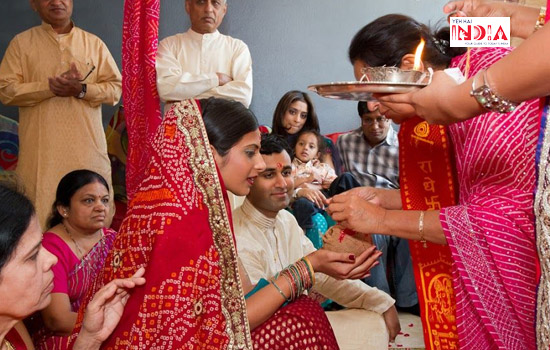
Gol Dhana is typically the ring exchanging ceremony where the bride’s family visit the groom’s family and presents them with gifts and sweets. The term Gol Dhana literally refers to coriander seeds and jaggery but in Gujarati customs, the term represents the engagement ceremony.
3. Ganesh Poojan– Praying to Lord Ganesha

The ritual of Ganesh Sthapna or Ganesh Maatli is considered to be the official beginning of the wedding. Ganesh Poojan is held a few days before the marriage day and both the families wish for a happy and healthy life of the couple.
4. Mehendi Ceremony
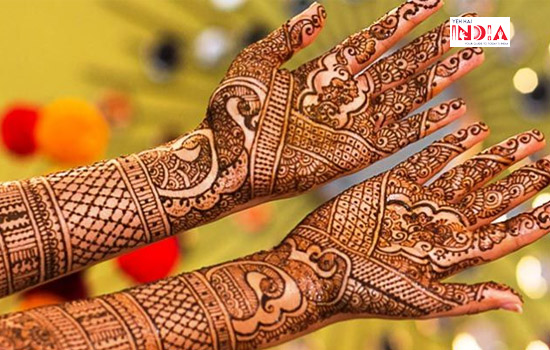
Like in every Indian wedding, the mehendi ceremony is observed two days prior to the wedding day. Henna Paste is applied on the bride’s hands and feet with beautiful detailed designs while folk songs are sung during the ceremony..
5. Mandap Muhurat
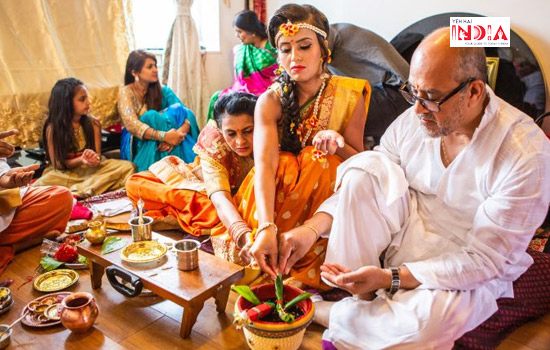
In this ritual, both the families seek blessings of Mother Earth before digging the land to create the Mandap.
6. Graha Shanti– A pooja for the planets
Performed right after the Manadap Muhurat, Graha Shanti is a mandatory ceremony in a Gujarati Wedding. All the nine planets are worshipped by both the families to address the obstacles and situations presented by planetary positions.
7. Pithi– The Haldi ceremony
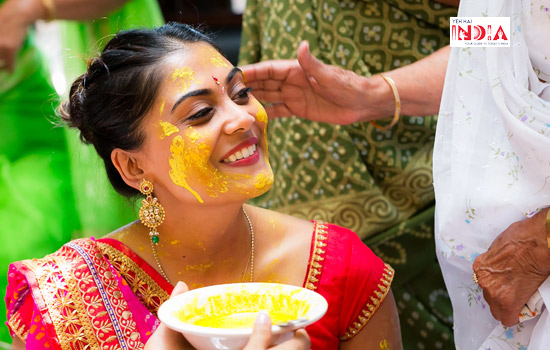
Mostly observed as a Haldi ceremony, Pithi in Gujarati rituals is the process of applying a paste of Turmeric, Rosewater and Sanadalwood on the bride’s and groom’s face, feet and hands while they are seated on low stools.
8. Sangeet Sandhya or Sanji– The Musical Evening
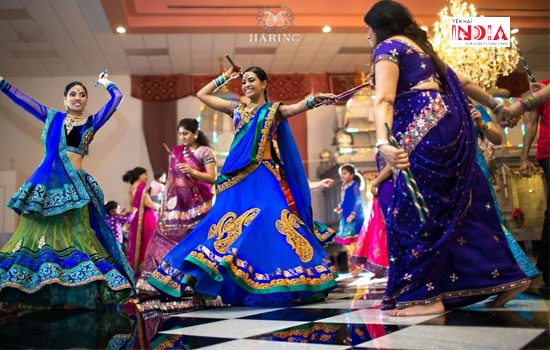
The evening celebrating the wedding by musical and dance performances is known as Sanji/Sangeet Sandhya in Gujarati wedding rituals. Sanji is considered to be the most fun-filled ceremony as all the family members and friends prepare separate dance performances and celebrate the coming together of two souls.
9. Mosalu or Mameru– Gifts from Maternal Uncles & Aunts
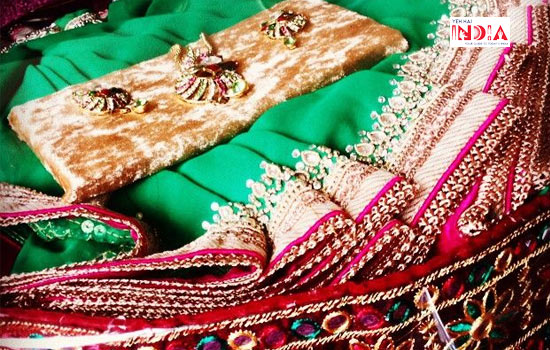
This ceremony is performed one day before the wedding day where the bride’s maternal uncle and aunt visit her to giver sweets, gifts, traditional Paanetar saree, Jewellary, etc.
10. Jaan– taking blessings
The last ceremony in pre-wedding rituals of a Gujarati wedding is Jaan. During the ceremony, the groom visits his mother in law to take her blessings and best wishes. The ritual is probably performed to ward off any evil before the wedding.
The Wedding Day Rituals
1. Varghodo– The wedding procession
Varghodo is the procession of the groom and his side of the family to the wedding venue. While others dance and set off fireworks on the way, the groom arrives sitting on a horse . With the music and band playing, Varghodo marks the fun beginning of the wedding day.
2. Ponkvu– Welcoming the groom
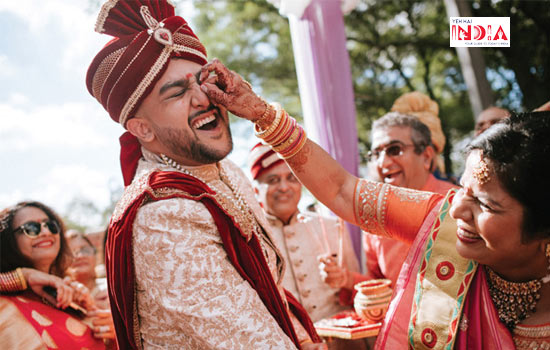
The next step is the welcoming ceremony of the groom and his family where his mother in law applies tilak on his forehead and welcome the groom by pulling his nose.
3. Jaimala– Exchanging the Garlands
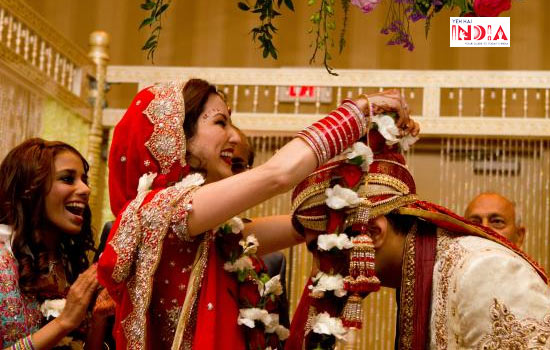
This is the first time when the couple meets each other formally on stage and exchange garlands. Its a fun affair as friends and family shower flowers and give their good wishes to the couple.
4. Madhuparka – The Mandap ceremony, welcoming the groom

Madhuparka is the next step where the mother in law leads the groom to the Mandap and washes his feet with milk and water. The groom is then made to have ‘panchamrat’, a drink containing five ingredients of milk, yogurt, honey, ghee and sugar. While the process continues, groom’s sisters in law try to steel his shoes, a ceremony known as ‘Juta Churai’.
5. Antarpaat–The Mandap ceremony, arrival of the bride

Antarpaat ritual is the process of bride’s arrival on the mandap with her maternal uncle. An opaque cloth is placed between both the bride and groom so they don’t look at eachother directly.
6. Kanya Daan
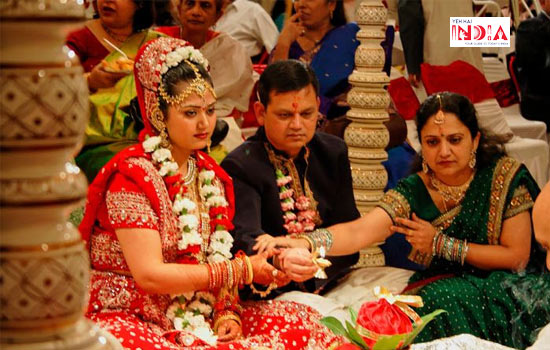
Kanya Dan is considered to be one amongst the most sacred ritual in most Indian marriages. The father of the bride washes grooms feet and places his daughter’s hands on his son-in-law’s. This ritual signifies that the father has now given his daughter to the groom with utmost trust and expectations.
Though the concept of this ritual in present time is much debated
7. Hasta Milap– Taking the wedding vows

Hasta Milap is the process of the priest chanting sacred verses while knotting up groom’s shawl and bride’s saree. The couple holds their hands and take the wedding vows, the very reason why the ritual is known as Hasta Milap.
8. Mangal Phere– The 7 circles around the holy fire
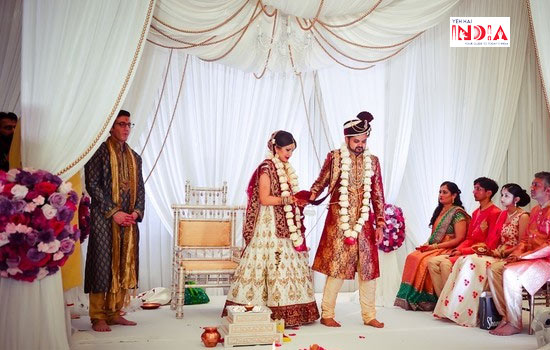
Mangal Phere is another main ritual of the wedding ceremony. The bride and the groom take four circles while walking around the sacred fire, for the four main goals of human life namely- Dharma, Karma, Artha and Moksha. Throughout the ritual, the garments of both the bride and groom are tied into a knot and the priest keep chanting holy verses.
9. Saptapadi
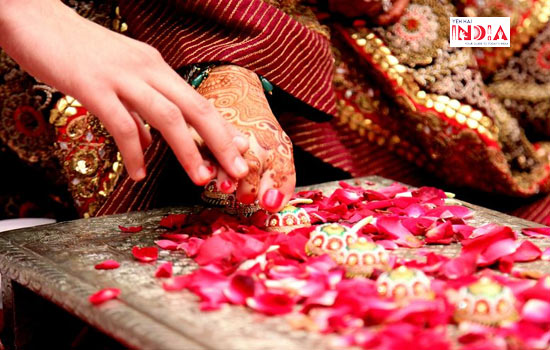
During this ritual, the bride is made to touch seven betel nuts placed in a straight line with her right toe. After performing this ritual, the bride and groom recites seven sacred vows.
10. Sindoor Daan
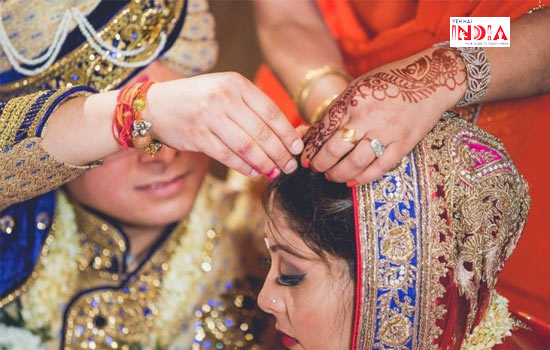
Sindoor daan is an auspicious step in the ceremony where the groom puts vermillion on bride’s hair parting and ties mangalsutra around her neck.
11. Kansar
Kansar is the last ceremony of the wedding day. Bride and groom feed eachother sweets with their hands and have their meals together.
Post-Wedding Celebrations
1. Saubhagyavati Bhava – Blessing the bride
During this ritual, seven married women are invited to bless the bride and say the three wishful words- ‘Akhand Saubhagyavati Bhava’ meaning, ‘may you live a happy married life forever and your husband remains safe’.
2. Chero Pakaryo– Give me Gifts
Chero Pakaryo is a fun-filled ritual in Gujarati wedding where the groom holds onto the saree of his mother in law, asking for gifts.
3. Aashirwad– The blessing ceremony
The couple seeks for blessings of all the elders present by touch their feets together.
4. Wedding Reception
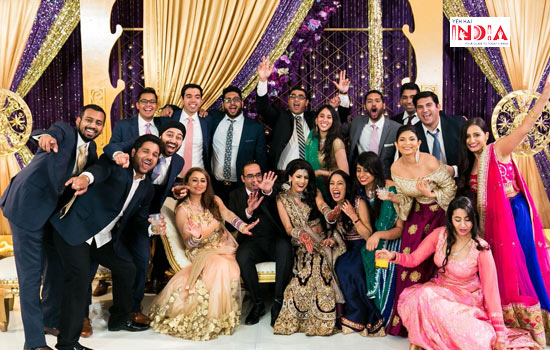
Reception is organised to throw a happy feast to the newlyweds. Everybody present in the wedding greets and gifts the couple and then enjoy the feast.
5. Vidaai– Goodbye by the bride to her family
Most emotional event of the wedding ceremony is Vidaai when the bride has to leave her own home after the rituals are done to enter her new home.
6. Ghar Nu Laxmi– Welcoming the bride to the grooms’s house
This rituals marks the beginning of the bride’s new married life in her husband’s home. The bride is warmly welcomed as her mother-in-law performs aarti and applies tilak on her forehead. The new bride is considered to be ‘Ghar nu Laxmi’ meaning the one who brings luck and prosperity to her new home. The bride then enters the house by knocking down a vessel filled with rice through her right leg.
7. Aeki Beki– Fun games played by the bride and groom
To end the wedding ceremony with fun and bliss, the bride and groom are made to play a game where a ring and coins are placed in a tray filled with milk, petals and vermillion. It is believed that the one who finds the ring first in the four rounds of the game, lead the relationship.
This is how, the vibrant Gujarati wedding ceremony with exceptional rituals, comes to an end.
.


